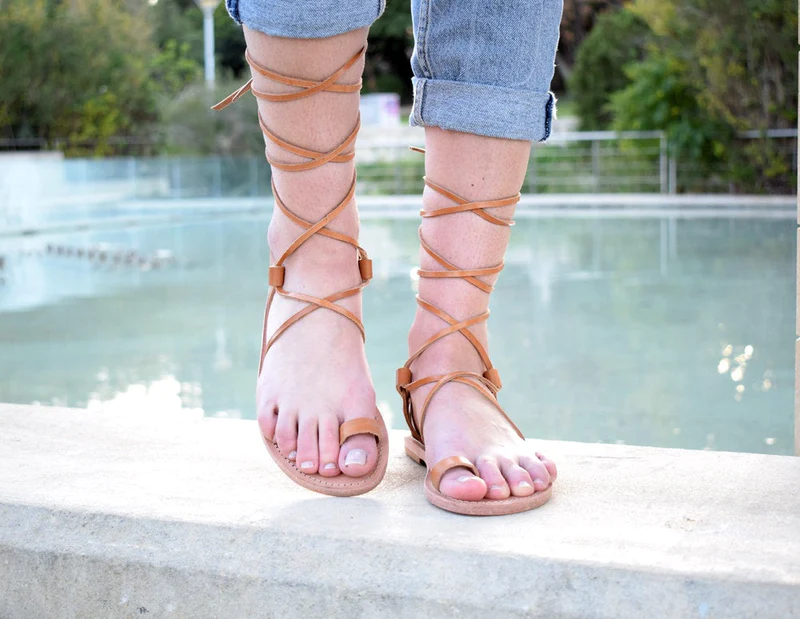In the world of footwear, handmade Greek sandals stand as a testament to the marriage of artisanal craftsmanship and timeless design. Rooted in a tradition that spans centuries, these sandals are more than just shoes – they are a cultural legacy, a symbol of quality, and a nod to the skilled artisans who meticulously craft each pair. This article explores the rich world of handmade Greek sandals, delving into their history, craftsmanship, and enduring allure.
Historical Heritage:
Handmade Greek sandals trace their origins back to ancient times, reflecting a cultural legacy deeply intertwined with craftsmanship. In the cradle of Western civilization, artisans dedicated themselves to creating footwear that not only served practical purposes but also expressed artistic sensibilities. These sandals were crafted using techniques passed down through generations, ensuring the preservation of a unique skill set.
Craftsmanship:
- Materials: Handmade Greek sandals are crafted using premium materials, with a focus on authenticity and durability. Leather remains a predominant choice, often sourced locally for its quality and natural properties. Some artisans also incorporate other materials such as fabric, suede, or embellishments like beads and gemstones for a personalized touch.
- Techniques: The crafting of handmade Greek sandals involves a series of intricate techniques that require precision and skill. Artisans cut, shape, and mold the chosen materials to create the various components of the sandal, including the sole, straps, and embellishments. Hand-stitching is a common practice, ensuring the longevity and flexibility of the sandals.
- Customization: One of the defining features of handmade Greek sandals is the ability to customize them according to individual preferences. Customers can choose the type of leather, color, style, and even request specific embellishments. This level of personalization enhances the connection between the wearer and the artisan, resulting in a unique and cherished pair of sandals.
- Traditional Tools: Artisans often use traditional tools that have been passed down through generations. These tools, ranging from simple knives to more specialized implements, contribute to the authenticity of the craftsmanship. The process is a labor of love, with each pair reflecting the dedication and passion of the artisan.
Cultural Significance:
Handmade Greek sandals carry a cultural significance that extends beyond their functional purpose. They embody a connection to the past, serving as a link to the ancient traditions of craftsmanship. The attention to detail and commitment to quality reflect the values of a culture that appreciates the artistry inherent in everyday objects.
Modern Appeal:
While steeped in tradition, handmade Greek sandals have seamlessly adapted to contemporary fashion trends. Renowned designers and boutique artisans alike have embraced the handmade approach, creating collections that blend the timeless charm of Greek sandals with modern aesthetics. The demand for artisanal, handcrafted products has only grown, as consumers seek unique, sustainable alternatives to mass-produced footwear.
Conclusion:
Handmade Greek sandals are more than just a fashion statement – they are a celebration of craftsmanship, tradition, and individuality. From the ancient streets of Athens to the runways of modern fashion, these sandals continue to captivate with their timeless allure. Each pair is a testament to the enduring artistry of skilled craftsmen and a reminder of the rich cultural heritage they represent. So, slip into a pair of handmade Greek sandals, and step into a world where tradition and craftsmanship converge in every carefully stitched detail.










